Although I coasted through my teenage years with clear skin, it was in my twenties that I began experiencing hormonal adult acne. I'm talking the kind of cystic acne and spots that take so long to heal that another soon pops up in its place—no matter how good my acne products were. After countless GP appointments, lots of tweaks to my skincare routine, multiple rounds of antibiotics and (finally) a referral to an NHS dermatologist, I was eventually prescribed spironolactone as part of my acne treatment, which worked wonders.
However, while the spots have subsided, I've been left with acne scarring, enlarged pores and uneven, rough skin texture around my chin. So, this lead me to seeking the best clinical treatments for acne scarring throughout the past five years.
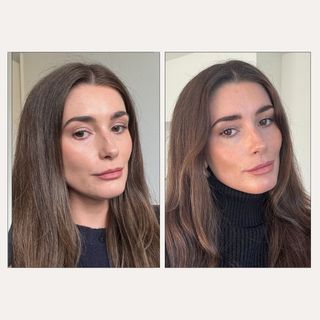
Thankfully, most of my acne scarring is minimal and contained to my chin and a little on my cheeks. However, as someone who experienced acne and eczema all throughout my twenties, I'm fully aware of the toll that skin issues and concerns can take on our mental health and wellbeing. And even after acne has come and gone, dealing with the scars afterward can affect your confidence, and can be annoying and difficult to treat.
I'm lucky that my job as a beauty journalist allows me to try some of the best in-clinic treatments and skincare around, so I'm keen to share the acne scarring treatments that genuinely worked for me, from in-clinic treatments to at-home skincare.
What Is Acne Scarring?
Acne scarring can take form in pigment changes (such as hyperpigmentation, or darkening of the skin) or as textural changes. There are different kinds of scarring, which present differently on the skin. Below, Dr Ahmed El Muntasar, GP and award-winning aesthetician details the different kinds of scarring.
Atrophic Scars: "These are a type of scar that causes indentation or depression in the skin. It's usually due to loss of collagen during the healing process of that specific scar," he says.
Hypertrophic Scars: "These are the opposite," says Dr El Muntasar. "So it's when there's too much collagen in the area, and actually the skin starts to stick out more."
Box Scars: "These are a type of atrophic scar that have well defined edges," says Dr El Muntasar. "They're rectangular, generally, and there's an element of previous severe inflammation in the acne that causes it."
Ice Pick Scars: "These are deep, narrow indentations in the dermis, specifically. And again, it's usually caused by severe acne," he says.
Rolling Scars: "These are atrophic scars with wavy, uneven textures. Usually there's fibrous bands in them that pull the scar inwards," says Dr El Muntasar.
Keloid Scars: "These are thick, raised scars that go beyond the margins of the original lesion. They're usually caused by overproduction of collagen during the healing process," he says.
What Causes Acne Scarring?
"Acne scarring is usually caused by inflammation," explains Dr El Muntasar. "When there's inflammatory damage to the skin because of the acne, this triggers an abnormal healing response, leading to either loss of collagen or excessive production of collagen. When it's lost, it's atrophic, so depressed. When it's excess, it causes hypertrophic or keloid scarring."
What Are the Best Treatments for Acne Scars?
Dr El Muntasar says that the best type of treatments for scarring are generally microneedling, chemical peels, laser resurfacing and fractional CO2 lasers or subscision. "You can also use steroid injections for hypertrophic scars as well as dermal fillers," he says.
What Skincare Can Help Treat Acne Scarring?
While in-clinic treatments can help hugely with acne scarring, a good at-home skincare routine shouldn't be overlooked. Certain skincare ingredients can help improve acne scarring and help bolster the results in-clinic treatments you're having. "For at home treatments, you can use things like exfoliating acids such as AHAs (alpha-hydroxy acids, such as glycolic acid) or BHAs (beta-hydroxy acids, such as salicylic acid), niacinamide, vitamin C, retinoids (retinol, retinal or tretinoin) and sunscreen," says Dr El Muntasar. "All these things are very important to maintain," he says.
How To Prevent Acne Scarring
"The best thing when it comes to prevention of acne scarring is treating the acne as early as possible to reduce the risks of inflammation," says Dr El Muntasar. Yes, this also means avoiding picking and squeezing. While tempting in the moment, picking and squeezing out spots can scar the skin. "Using skincare products that are tailored to the acne based on the severity [of acne] and that are made to promote healing are ideal also," he says. He also recommends using SPF every single day to shield your skin—not just during the summer or when it's sunny. UV rays can cause skin damage even on cloudy days, so be diligent with your application.
What Should Be Discussed In A Consultation For an Acne Scarring Treatment?
If you're considering an acne scarring treatment—or any cosmetic treatment, for that matter— it's important to find a practitioner and clinic that are adequately trained and qualified to treat you. Plus, there are some key factors you'll want to discuss in your initial treatment consultation.
"During a consultation during acne scarring treatment, they should be making sure that there has been a thorough [assessment of] your medical history, thorough examination and assessment of the skin and discussion of treatment options," says Dr El Muntasar. "This could include things like topical or oral, systemic treatments. It is also important to make sure the patient understands kind of realistic expectations of outcomes and any post-treatment care."
While acne scarring treatments can help greatly, depending on the severity of your acne scarring you may require a course of treatments, so cost is important to factor in here too. Some acne scarring treatments, such as microneedling and CO2 laser, also come with a downtime period and strict post-procedure protocols, so you also want to ensure you have the time to commit to healing afterwards. It's also important that your practitioner talks you through any risks associated with the treatment.
Are Acne Scarring Treatments Suitable For All Skin Tones?
The suitability of the treatment should be a key factor discussed during your consultation. While some treatments are suitable for a range of skin tones, some should be avoided if you have a darker complexion. For darker skin tones, Dr El Muntasar recommends microneedling, subscision, chemical peels, dermal fillers, collagen stimulants and non-ablative lasers. "Unsuitable treatments are aggressive lasers, ablative CO2 lasers, erbium lasers and really deep chemical peels," he says.
Best Treatments For Acne Scarring, Tried & Tested
1. CO2 Laser
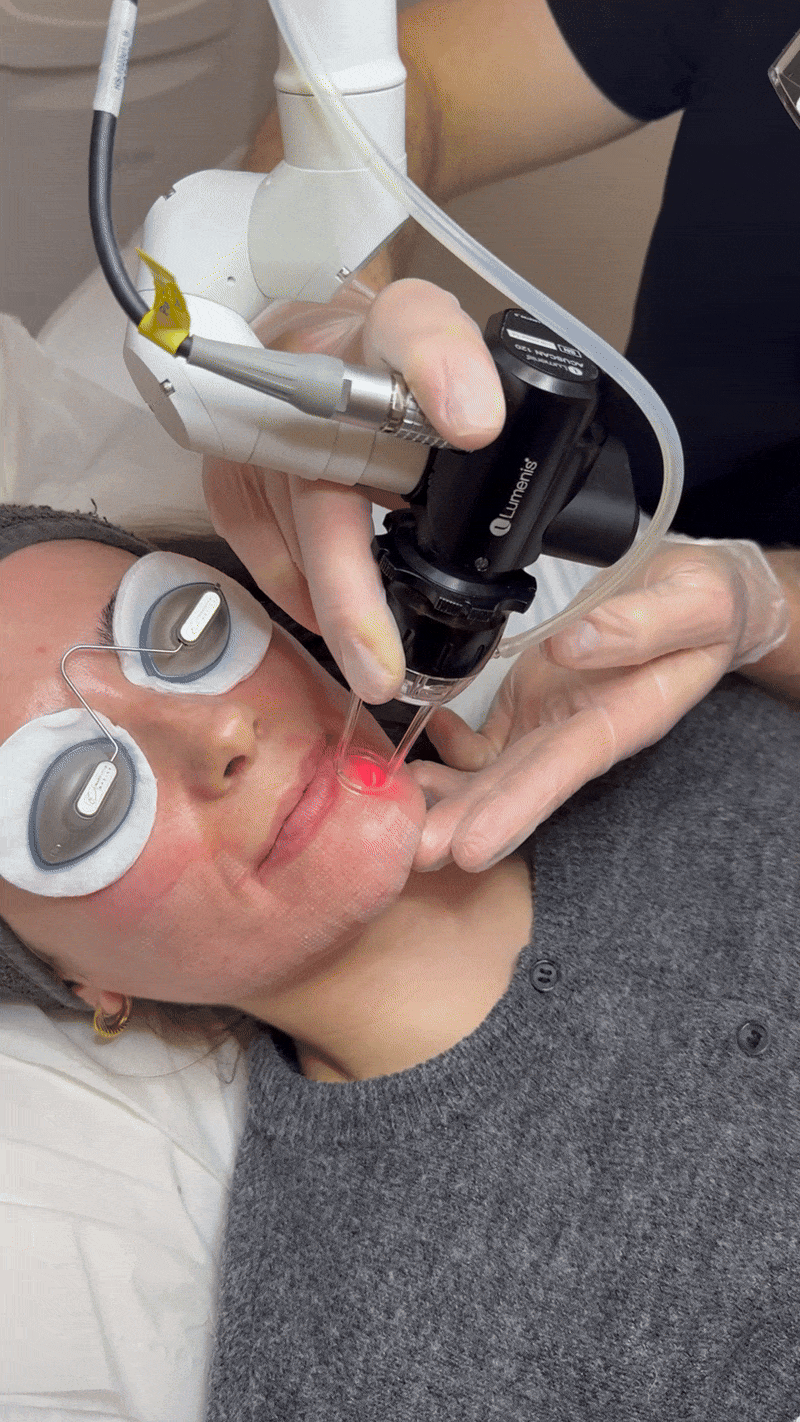
CO2 laser is most recent treatment I've tried, and one I wish had investigated sooner when considering acne scarring treatments. For my treatment I visited Dr Liam Piggot, CO2 laser expert at Grand Aesthetics.
What is CO2 Laser?
CO2 laser is a type of ablative laser procedure that helps to produce the formation collagen, making it a great treatment for addressing uneven skin texture and scarring, include acne scarring.
"CO2 laser can potentially work very well for acne scaring, considered a 'gold standard' treatment," says Dr Piggot. "It is often something patients try at the end of a journey where they have tried other treatments first for acne scaring that haven't worked, but there is a strong argument that for severe scaring it should be considered the first treatment to try, rather than the last," he says.
"The Lumenis AcuPulse can be used on a 'fractional' setting, where it delivers precise small beams of laser in a grid, leaving columns of untreated tissue between. This assists healing and skin regeneration," he says.
How to Prepare for a CO2 Laser Treatment
"It is important patients discontinue potentially irritant skin products like retinoid, salicylic acid and glycolic acid a week before treatment, and avoid sun exposure or tanning in this period as well," says Dr Piggot.
It's better to plan your laser treatments during the autumn and winter months, as you'll need to be very careful to avoid sun exposure while your skin is healing during the downtime and in the weeks after your treatment. So, consider if you'll be travelling abroad anytime soon before having this treatment done and opt to start your treatment in the autumn or winter.
You'll also want to have an in-depth consultation ahead of your treatment, as well as a patch test to ensure its suitable for you. "During the consultation, we identify the patient's main concerns, their understanding of treatments, what they would like to achieve," says Dr Piggot. I also briefly explore the psychological impact on the patient's wellbeing, he says. "We assess medical history, medications, allergies, lifestyle and social history, including if they smoke, their occupation, their sun exposure, upcoming travel," he says. It's also important to tell your practitioner if you think you may be pregnant, as CO2 laser will not be suitable.
"If the patient wishes to proceed, I then discuss costs and that many laser treatments may require two or three rounds of treatment to achieve the optimum result," he says. "Patients typically have the best result after about three months, due to the regeneration of the skin including collagen production."
What To Expect During a CO2 Laser Treatment
Before the treatment begins, the skin is cleansed, and anaesthetic cream applied for 30 minutes to help reduce discomfort during the treatment (it can be a a little stingy) and the skin is cleansed again cleansed again. You'll wear eye shields during the treatment.
Thanks to the numbing cream, I wouldn't say the treatment is very painful, but it can be a little prickly in places as the laser heats the skin. It feels like a zapping sensation, and you can feel the laser creating little dots as it treats the skin.
The treatment time will depend on the size of the area being treated, but it's recommended that you book out a couple of hours to have your treatment done to allow time for the numbing cream to take effect, to have the treatment done and for the skin to cool down afterwards. "After the treatment, a gauze and cold saline is then applied for 20-30mins, then an application of the Aquaphor. "
How Long Is the Downtime?
"Most patients will heal significantly within the first week, and then be largely completely healed by 14 days," says Dr Piggot. "The skin will become re-epithelialised by the end of this period, and then patients can usually commence their usual skincare and makeup."
You may also be required to take medication after the treatment. "Depending on the size and location treated, the patient may be given an anti-microbial prescription, to start on the day of treatment," says Dr Piggot. This is to prevent infections as your skin heals.
You'll also want to follow the skincare aftercare from your practitioner, which involves using a gentle cleanser such as Cetaphil Gentle Cleanser (£11.50), following with a moisturiser (I was was recommended CeraVe Moisturising Lotion (£16.50) and avoiding makeup until the skin has fully healed. Of course, you'll want to avoid the sun and apply a good SPF too, such as La Roche-Posay Anthelios UVMune 400 Invisible Fluid SPF 50 (£20), and I was also recommended to apply Aquaphor (£13.50) generously to the skin to create a barrier as the skin heals.
I'd also recommend finding space in your diary while your skin recovers. My skin was quite red in the first four days after my treatment, but this significantly lessened by days 5-7. The following week, my skin looked pink, and after the two week mark, my skin looked back to normal and I started noticing the beginnings of my results.
CO2 Laser Results

It takes up to three months to see the full effects from a CO2 laser treatment. I'm currently just over two months in after my first treatment now, but I've already seen a great improvement in my skin texture, especially on my chin. The skin texture looks smoother and less bumpy. Dr Piggot tells me that depending on the patient, two or three treatments may be required for the best results.
CO2 Laser Cost
Costs for CO2 laser treatments will varying depending on your location, the clinic and how many treatments you will need. "A typically price range would start at £500 for a localised area or scar, through to £2000 or more for advanced, full facial resurfacing," says Dr Piggot. "An estimate of price can more accurately be given as part of the initial consultation, and how many rounds of treatment a patient may require.:
Risks of CO2 Laser
"CO2 is generally considered a safe treatment, but it is important to select the right treatment, for the right patient, at the right time," says Dr Piggot. "A full assessment of the patients concerns, requirements, medical history are essential. We should also do a patch test on a small area to ensure the patient does not have an adverse reaction, prior to their full treatment."
Risks of CO2 laser include a recovery time of up to two weeks, pain, skin infections and the need for further rounds of treatment. "Most patients typically benefit from two or three treatments to achieve the optimum, long-lasting result," he says.
2. Radiofrequency Microneedling
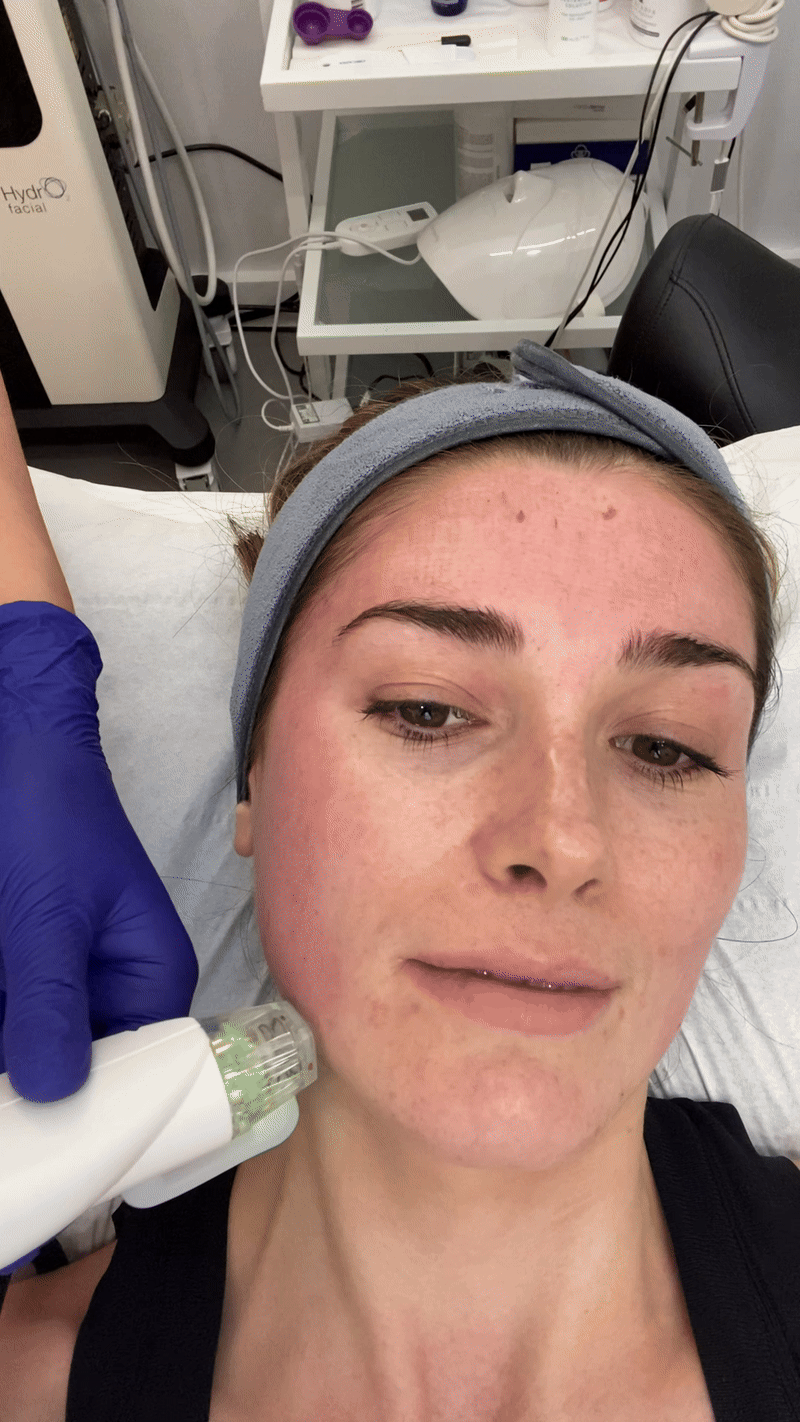
(Image credit: @eleanorvousden for Who What Wear UK)
What Is Radiofrequnecy Microneedling?
Often refered to as RF mircroneedling, radiofrequency microneedling is a great treatment for scarring. "Combining two clinically proven technologies—radiofrequency and microneedling—that work synergistically, the RF microneedling treatment offers dramatic skin-boosting results," says Debbie Thomas, skincare expert and founder of
D.Thomas Clinic.. "RF microneedling is a versatile treatment, effective for age management, healthy skin promotion, overall textural improvements, scar reduction and acne reduction."
It works by inflicting controlled trauma and energy itto the skin, which helps to kickstart collagen production and remodel uneven skin texture. "Microneedling is really good for refining the skin, helping to even skin texture, while the radio frequency creates heat to tighten and stimulate collagen," she says. "So, the two together help to improve the overall appearance of the skin."
How to Prepare for a Radiofrequnecy Microneedling Treatment
I was advised to undergo a series of three treatments, each spaced four weeks apart, to get the best results for my specific concerns. The number of treatments you’ll need depends on the severity of your issues.
It’s recommended to avoid sun exposure before your treatment, which makes autumn and winter the perfect times to start, much like laser treatments. That said, I had just returned from a sunny holiday a week before my first session, so my therapist used insulated needles to make the treatment gentler on sun-exposed skin. These insulated needles are also better for darker skin tones, and your therapist will assess your skin tone to choose the right needle depth for optimal results.
Depending on the clinic you may need to apply numbing cream yourself before your microneedling session, but in other places, your practitioner may apply it. At D.Thomas Clinic, for example, I had to bring my own numbing cream, which I applied 40 minutes before my treatment. However, for my first session, I actually skipped the numbing cream. It was mostly tolerable, but I would definitely recommend using it for a more comfortable experience, especially if you're sensitive to pain.
What to Expect During a Radiofrequency Microneedling Treatment
I'll be honest, I found this to be one of the more painful treatments I've tried—I'd give it a 8/10 on the pain scale. Although the numbing cream definitely helped, the needles can feel pinchy, especially around more sensitive areas such as the eyes and lips. That being said, you do get used to it. My therapist treated both my face and neck, and she went over the areas of concern two or three times to make sure the treatment was thorough. After the treatment, my therapist applied SPF and I was required to not use any makeup for 24 hours after each treatment.
How Long Is the Downtime?
After my treatment, I was very red and my skin felt warm, but my therapist reassured me that this was a normal and positive response to the treatment. It felt a bit like having a mild sunburn, and I stayed red for about an hour afterward (cue me rushing out of the clinic wearing oversized sunnies to catch the next tube). The redness faded after a couple of hours, and I looked a lot less flushed by then. In the following days, by skin had a couple of scabs as it healed, but nothing drastic.
Radiofrequency Microneedling Results
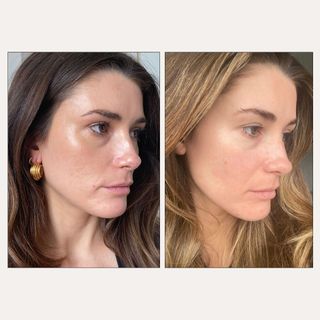
(Image credit: @eleanorvousden for Who What Wear UK)
Based on the results I've seen so far, I highly recommend this treatment for anyone looking to improve skin texture, address pigmentation or acne scarring, or just give their skin an overall refresh. I felt like my overall complexion looked far plumper.
While the treatment can be a bit uncomfortable and requires some downtime, I truly believe the results are worth it. Having had a microneedling treatment alone in the past, I can say that the addition of radiofrequency has definitely enhanced the rsults Because of that, I'm definitely considering booking more sessions in the future to maintain the results.
It's now been over two years since my treatment, and I’m still seeing the benefits, but I’d definitely be open to another round to further improve my acne scarring.
Radiofrequency Microneedling Cost
Treatment cost will vary from clinic to clinic, however, treatment at D.Thomas Clinic starts at £395 for a single treatment, or £1067 for a course of three.
Risks of Radiofrequency Microneedling
The most common side effects are temporary and include redness, swelling and discomfort. More serious risks include infection, scarring and hyperpigmentation. It's important to ensure you have a consultation prior to your treatment to find out if the treatment is suitable for you.
3. Tretinoin
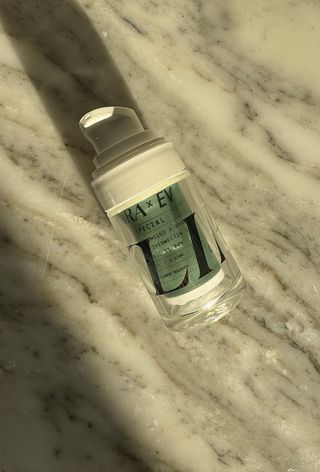
(Image credit: @eleanorvousden for Who What Wear)
One treatment that has also supported an improvement in my acne scarring is tretinoin. It's a prescription ingredient, so you'll need to access it via a dermatologist or a skincare prescription platform such as Klira, Skin + Me and Dermatica. These services allow you to be assessed by dermatologists online before a custom treatment will be sent out to you in the post.
What Is Tretinoin?
"Tretinoin, also known as all-trans-retinoic acid, is a prescription drug and the active form of vitamin A, which is taken up by cells in the skin," explains dermatologist Dr Beibei Du-Harpur. "This then binds with retinoid receptors to unravel areas of DNA, thus altering the cell’s behaviour. This ultimately leads to increased cell turnover, promoting a more compact stratum corneum [the top layer of skin] and collagen production amongst other things," she says. As such, it's often prescribed for treating acne and signs of ageing. However, as tretinoin is a prescription drug, you'll need a dermatologist to prescribe it for you, and you cannot use it if you're pregnant.
How to Use Tretinoin
"Whilst having remarkable effects on the skin, tretinoin is notorious for causing irritation and so gradual acclimation is often necessary," says Dr Du-Harpur. "There are various strategies to improve tolerability and decrease the symptoms of this initial retinisation process [of getting your skin used to retinoids]. Technically, tretinoin can be used for even the most sensitive of skins; careful guidance is key. Lower percentages of tretinoin tend to cause less irritation, whereas higher percentages are more irritating but may yield results more rapidly," she adds.
One way of minimisng irritation is to apply a moisturiser before and after applying tretinoin (kind of like a skincare sandwich) and gradually upping the amount of days per week you're using it as your skin acclimatises.
Tretinoin Results
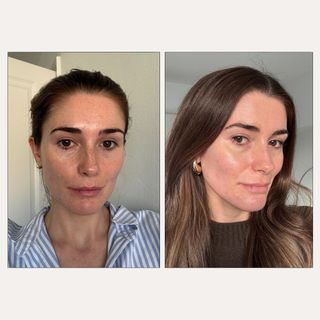
(Image credit: @eleanorvousden for Who What Wear UK)
I've been using Klira since testing it for the Who What Wear Next in Beauty Awards last summer (it was our Best in Class winner, FYI), and I've seen a dramatic improvement in my skin. After filling in an in-depth questionnaire and uploading photos of my skin, I was assigned a 'skin size' and accompanying cocktail of ingredients to address my skin's concerns. One of those was tretinoin, which helps to address a whole range of skin concerns, but is particularly good for smoothing uneven skin texture and acne scars.
I've been using the treatment since the summer, and I've seen a great improvement in my skin overall. Every couple of months, I'm given a stronger dosage which can take some getting used to, but all in all, my acne scarring and overall skin texture and tone has hugely improved since I started in.
Shop Tretinoin:

Klira
The Klira Special - Annual Subscription
Annual subscription cost per month.
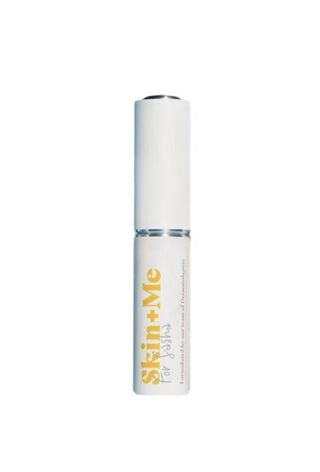
Monthly subscription cost.
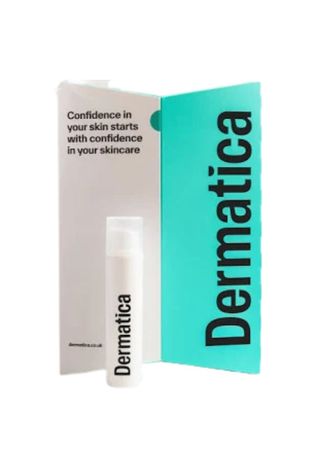
Monthly subscription cost.
Shop More Acne Scarring Treatments

La Roche-Posay
Anthelios UVmune 400 Invisible Fluid SPF 50+
Any skincare expert will tell you that wearing SPF every day should be a non-negotiable, and just about every one I speak to tells me this one is the gold standard.
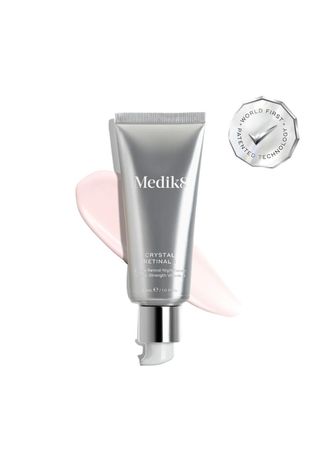
If you're new to using any types of retinoids, then this Medik8's retinal is a great place to start. It comes in varying strengths to accommodate your skin's journey and helps to target ace scarring, wrinkles and pigmentation.

Cosrx
Acne Pimple Master Patch
I'll hold my hands up: I'm a skin picker. However, this can worsen acne scarring. Instead, I apply a spot sticker to help heal the blemish and keep my hands away from it.
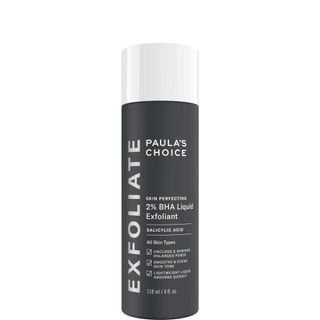
Paula's Choice
Skin Perfecting 2% BHA Liquid Exfoliant
I use this salicylic acid toner a couple of times a week to help exfoliate, declog pores and prevent acne breakouts.
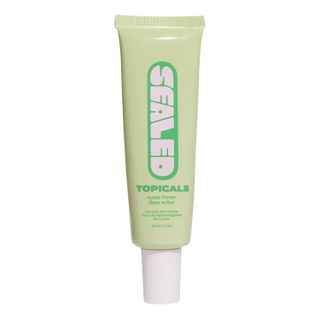
Topicals
Sealed Active Scar Primer
This velvety primer is not only great at smoothing over uneven skin texture and acne scarring, but it also contains silicone which is proven to help improve the appearance of scars over time.




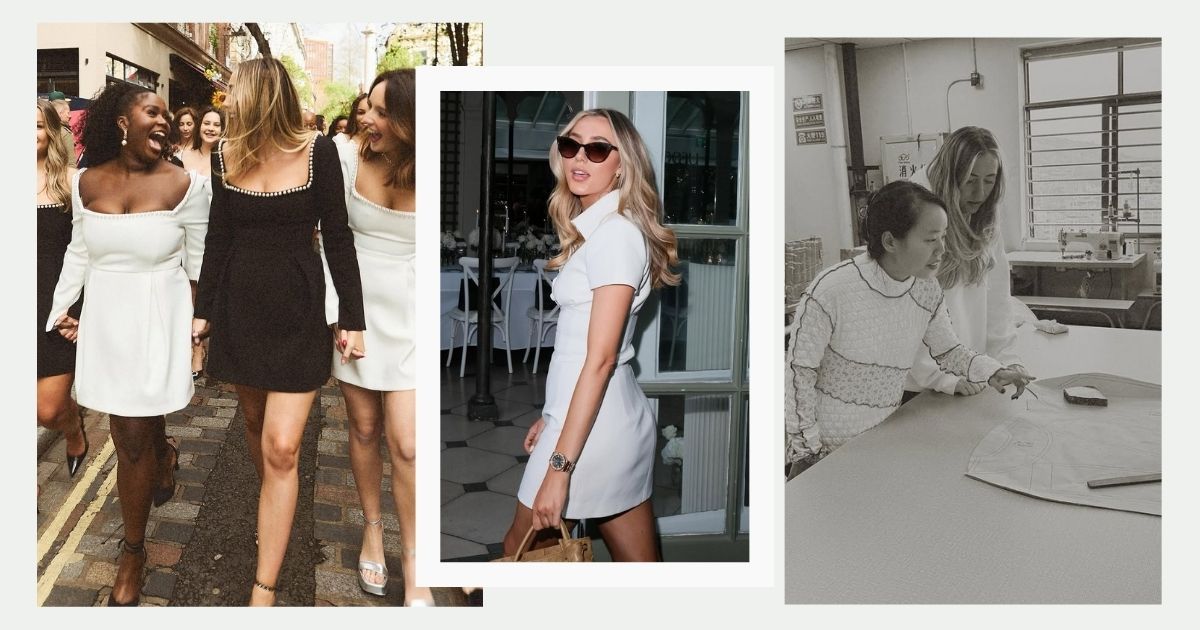















 English (US) ·
English (US) ·